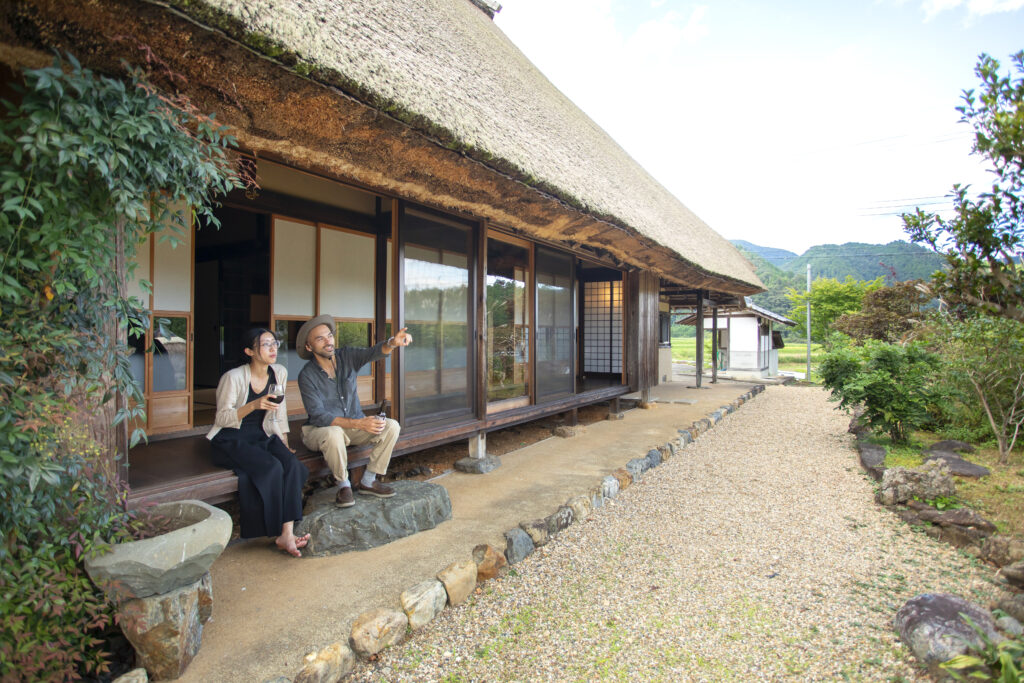A trip to Japan would not be complete without experiencing authentic traditional Japanese lodgings. From a thatched cottage in the mountain retreat of Miyama, to a charming 300-year-old ryokan inn in the coastal city of Miyazu which houses a historic art collection, Kyoto has a range of accommodation options that preserve the unique culture and history of their regional locations.
Inspiration
Rural Escapes: Journeying to Two Traditional Japanese Inns
2022.01.24
Idyllic Scenes of Rural Japan — Miyama Futon & Breakfast (Miyama-cho, Nantan City)
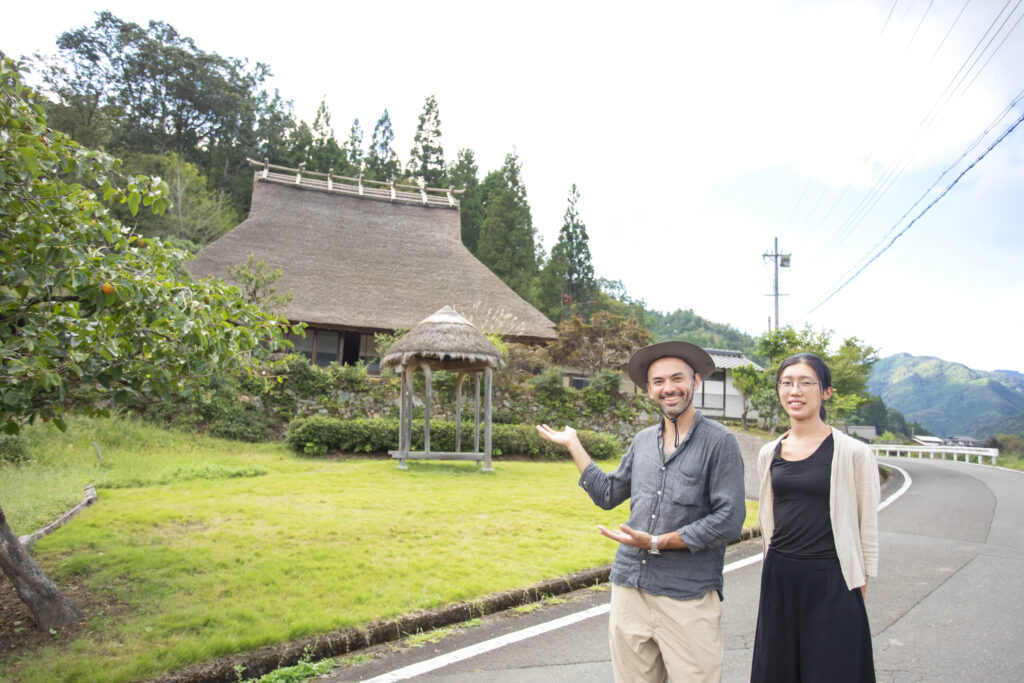
Nestled in the forested mountains of central Kyoto Prefecture, just an hour-and-a-half’s scenic drive from Kyoto City, lies the countryside escape of Miyama. The area boasts unspoiled rural vistas, with the Yura River meandering through the valleys of a landscape dotted with remote hamlets that offer a glimpse into the nostalgic charms of old Japan.
Miyama is known for its thatched roof houses, the greatest concentration of which are in Kayabuki no Sato, a village with 39 beautifully preserved cottages set against a steep mountain backdrop. Known as kayabuki, many of these thatched homes are well over a hundred years old. With so many of these old-style dwellings in one place, it feels as if you’ve taken a step back in time.
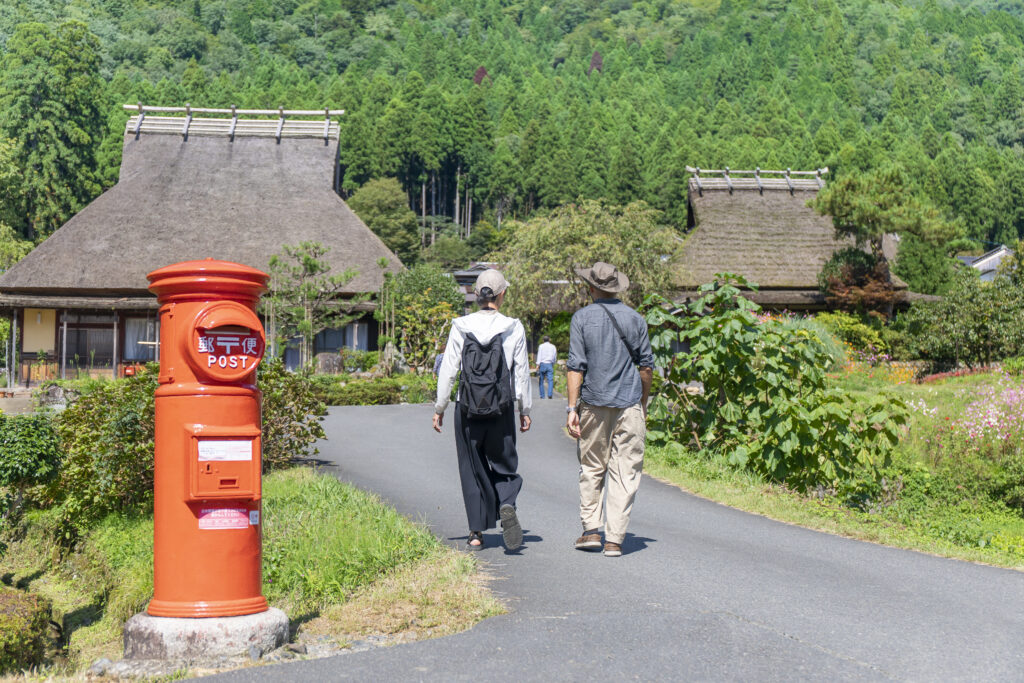
Admiration of these beautiful cottages needn’t only be from afar as a number of lodging options are available for those looking to immerse fully in their rustic charm. Miyama Futon & Breakfast—a hospitality company established by a kayabuki roof thatcher wishing to preserve the culture of thatched homes in Miyama—have renovated a series of cottages for use as holiday rentals. Each property is unique in design and structure. All retain traditional exterior elements and furnishings but with the conveniences of a modern kitchen and bathroom as well as air conditioning to ensure a comfortable stay.
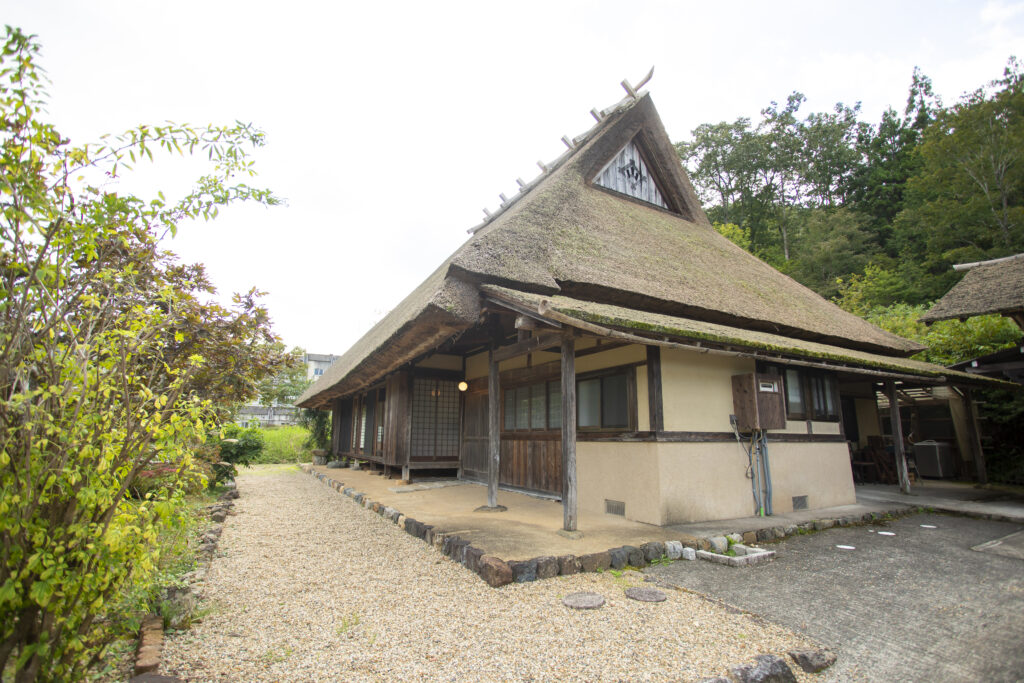
On this occasion we stayed at Mitoya, an elegant 150-year-old cottage perched on a hill above a stone wall and overlooking rice fields, just a 15-minute drive from Kayabuki no Sato. (The operators offer a free shuttle service from JR Sonobe station to their accommodations for guests coming by train.) After checking in at reception, we made the short drive to the property, and were immediately impressed. The earthy tones of its grand thatched roof blended into its surroundings in a way that reminded us of a scene out of an old pastoral painting.

Stepping into the cottage, we were struck by the size of the rooms—this expansive 100-square meter dwelling centers around a spacious living room with several exposed wooden beams running overhead and a large rectangular sunken hearth in the center. From here we could access a bedroom and two large Japanese-style rooms connected directly to a wide veranda that spans most of the northern face of the building.
With the exception of the kitchen, all rooms had tatami flooring, a beautiful contrast with the dark wooden beams of the house structure. While furnishings at Mitoya were largely sparse and utilitarian, this only served to heighten the sense of space.
◆The Freshest Local Seafood
__________
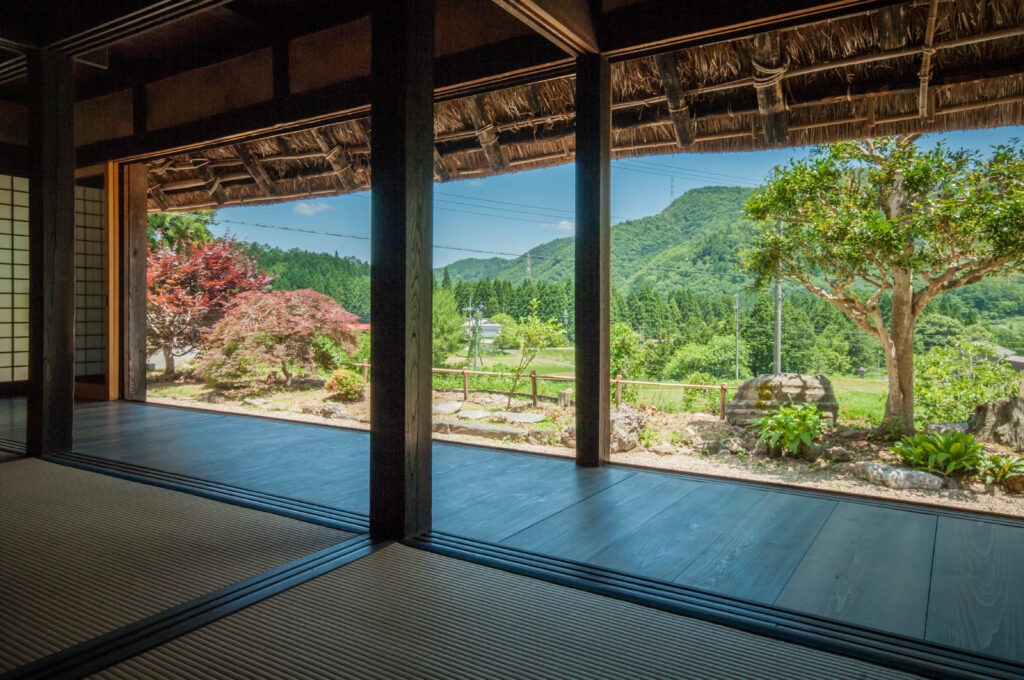
After exploring the interior, we took in the fresh countryside air from the wooden veranda overlooking the property’s charming garden and a tranquil scene of rice fields and mountains in the background. This was a perfect place to relax with a book, meditate or simply enjoy some rural gazing. It also allowed us a closer view of the underside of the thatch roof.
The roof consists of thick overlapping layers of grass bound together and beautifully cut to produce an aesthetically pleasing, even finish. We were told that thatch keeps the interior cool during Japan’s humid summers and also acts as insulation from outside sounds—you won’t be bothered by the noise of even the heaviest of rain!

The shape of the thatch roof and the materials used differ depending on the region and take into account the climate and availability of construction materials. Typical materials include, pampas grass, bundled rice straw and reeds. Miyama’s thatched roofs mainly use pampas grass which usually lasts 20 years before it needs to be replaced. Traditionally, the work of thatching was a group effort by the villagers, and so the process also served to strengthen social bonds within the community.
